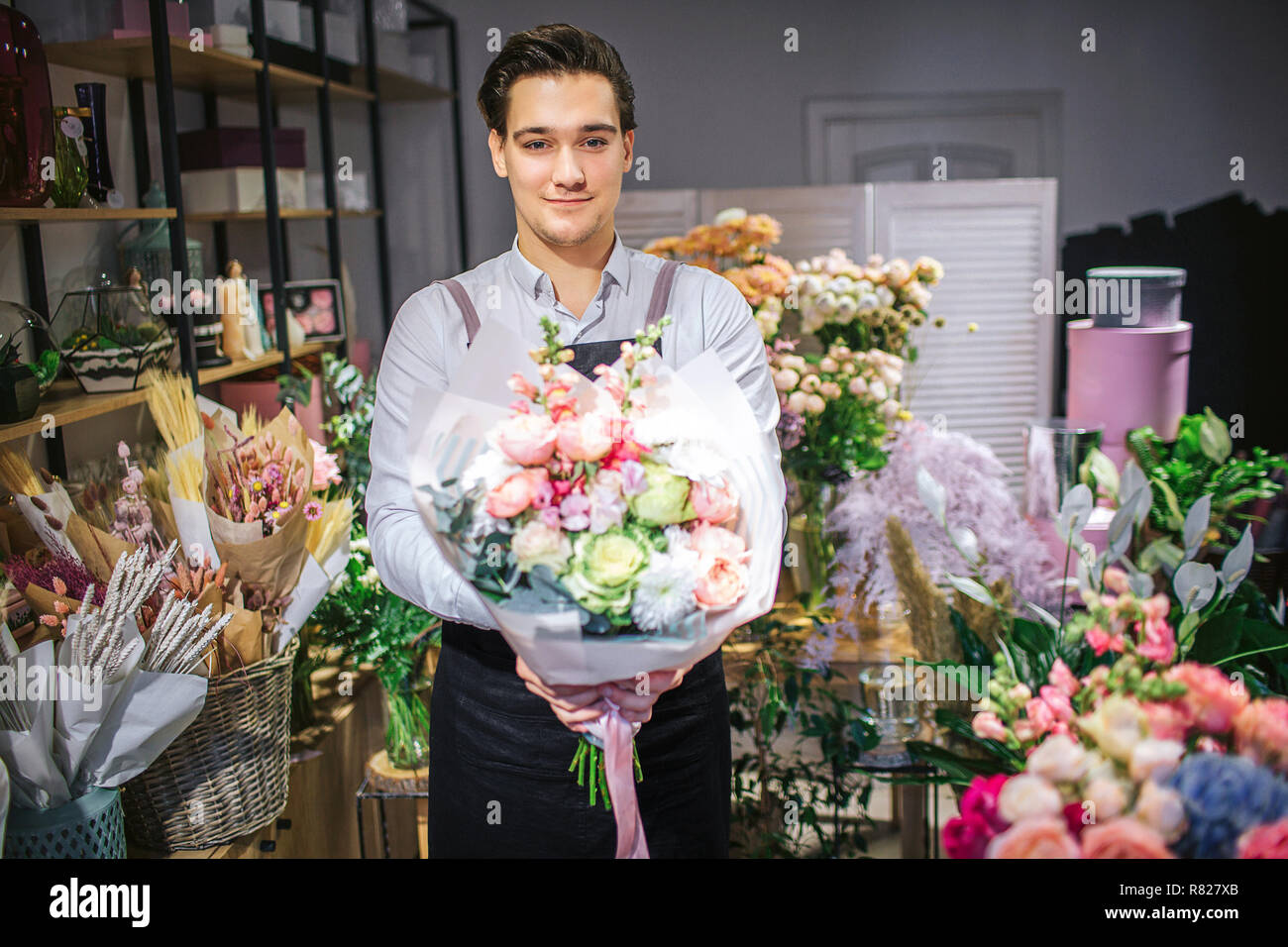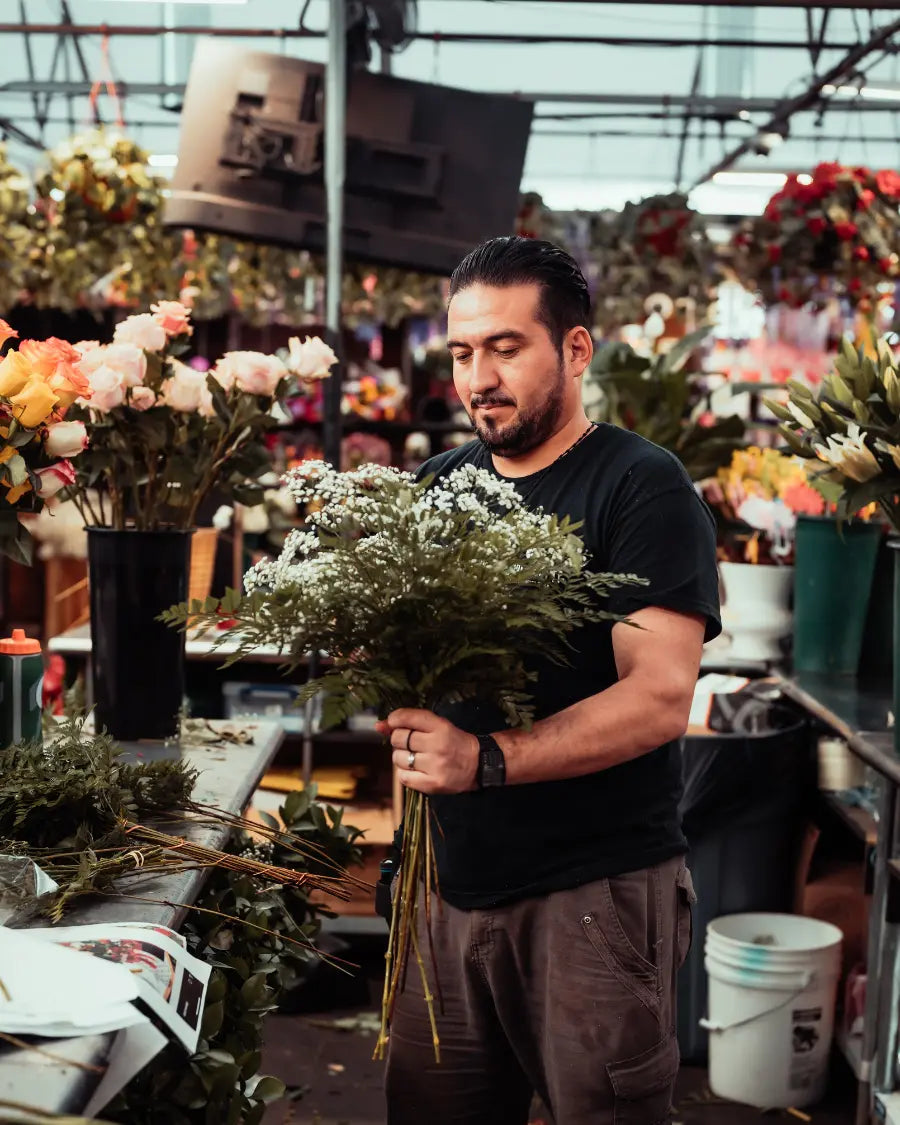Discover the Art of Floral Design: Tips From Expert Florists
Floral style is not just a visual undertaking; it is a nuanced art form grounded in principles such as equilibrium, proportion, and comparison. Professional flower shops supply important insights right into selecting the ideal flowers customized to particular events, making sure that each plan reverberates with its designated message. Methods like the triangle approach and height variation enhance visual appeal, while appropriate treatment lengthens the charm of the make-up. Understanding these fundamental components can change your flower developments, yet the journey does not end there-- discovering seasonal ideas and practical pointers can boost your skills further.
Recognizing Floral Layout Principles
Commonly neglected by amateur florists, recognizing the fundamental principles of floral design is vital for producing visually enticing plans (florist lockhart). These concepts work as the structure whereupon successful flower structures are developed, making certain consistency and balance in each development
Equilibrium refers to the circulation of visual weight within a setup, which can be balanced or asymmetrical. Contrast, attained through varying shades, forms, and structures, adds rate of interest and deepness to the layout.

Rhythm guides the viewer's eye via the setup, usually achieved by duplicating forms or shades. Last but not least, unity ensures that all parts of the style work together cohesively, creating a feeling of efficiency. By grasping these principles, floral designers can elevate their job, changing simple arrangements into spectacular aesthetic declarations.
Inevitably, a strong understanding of these flower design concepts not just enhances creative thinking however additionally cultivates a deeper recognition for the artistry entailed in floral plans (florist lockhart). With technique and application, beginner floral designers can establish their skills and develop unforgettable designs
Picking the Right Flowers
Selecting the ideal flowers is an important action in the floral layout procedure, straight impacting the general aesthetic and performance of the plan. To start, consider the celebration; various events ask for distinctive flower types. For instance, charming setups may gain from roses, while joyful parties could suit sunflowers or gerbera daisies.
Next, evaluate the shade combination. Unified shades can evoke details feelings and enhance the visual charm. Utilize a color wheel to determine complementary or analogous color systems that can create a natural appearance. Furthermore, think about the season; seasonal blossoms not only guarantee quality but additionally usually come at a lower price, making them a sensible selection.
One more vital variable is the desired long life of the plan. By thoughtfully selecting blossoms, you can create setups that reverberate with their intended function and audience.
Strategies for Arrangement

Another effective method is the "line layout," which highlights the natural lines and forms of the flowers. By using long-stemmed blossoms, designers can develop a feeling of activity and circulation in the arrangement, attracting the eye along the lines produced by the stems. Additionally, integrating varying heights in the setup includes depth and interest, enabling the viewer to check out the item from different angles.
This approach can evoke particular feelings and established the mood of the arrangement. Do not neglect the relevance of negative space; leaving voids within the arrangement allows for breathing space, boosting the general aesthetic and stopping overcrowding.

Seasonal Floral Inspirations
Including seasonal components into flower designs can exceptionally boost their appeal and relevance. By straightening flower arrangements with the changing seasons, florists can evoke particular moods, styles, and colors that resonate with clients and the setting. Each period uses an one-of-a-kind scheme of blooms and vegetation that enables imagination and ideas.
Fall's abundant tones can be captured via dahlias, chrysanthemums, and decorative lawns, developing cozy, welcoming setups that show the harvest. Wintertime provides a serene aesthetic with evergreens, amaryllis, and seasonal berries, perfect for stimulating a sense of peace and festivity.
Taking Care Of Your Setups
Caring for floral setups is essential to preserve their elegance and durability. Correct care makes sure that your blossoms stay vivid and fresh, boosting the aesthetic charm of your space. Start see by putting your arrangement in an amazing location, far from straight sunshine and drafts, as extreme temperature levels can create wilting and staining.
On a regular basis check the water degree in the vase, ensuring it is adequate to cover the stems adequately. Replace the water every few days to prevent bacterial development, which can reduce the lifespan of your plan.
In addition, think about the type of blossoms in your setup; some might need particular treatment. Prevent positioning your plans near ripening fruit, as ethylene gas can speed up wilting.

Final Thought
To conclude, grasping the art of floral style includes a thorough understanding of foundational concepts, careful option of blossoms, and the application of effective arrangement methods. Seasonal motivations better improve imagination, while appropriate treatment makes sure that floral screens maintain their beauty and durability. By integrating these elements, people can develop impactful plans that share emotion and serve their designated function, ultimately enriching the experience of both the creator and the recipient.